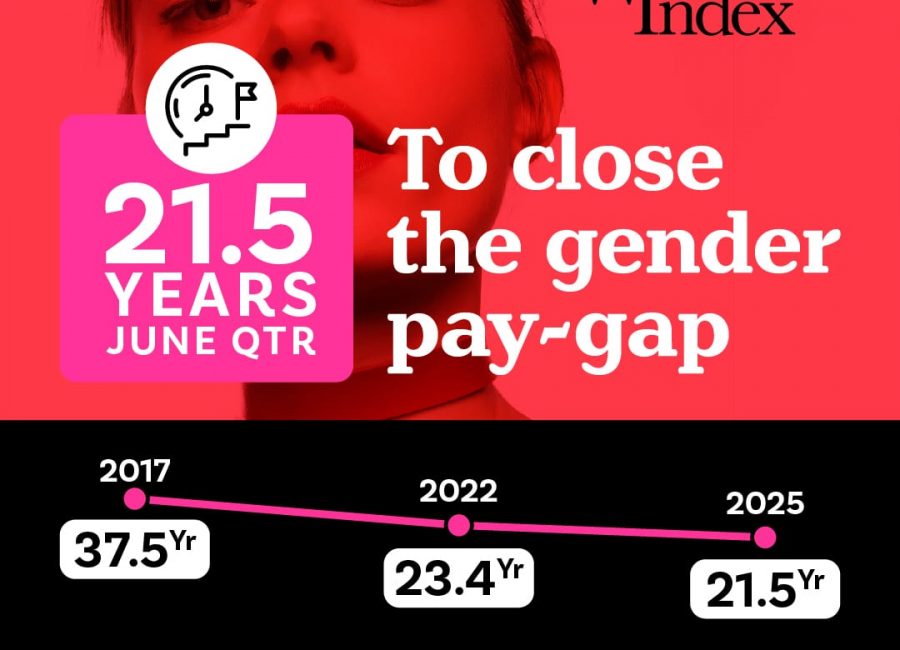If you’re thinking about leaving a financially abusive partner, regardless of that person’s gender, you need to be able to fund and protect your escape – long-term.
According to the Centre for Women’s Economic Safety (CWES), establishing your own financial independence is absolutely critical in being able to leave and not just look after yourself, but that of any loved ones too.
Meanwhile, here’s the 10 steps that CWES suggests you take in the lead up to and after leaving an abusive partner.
1. Create a free, private email account
Having a private email address is a great way to quietly communicate with a range of organisations. You will also need an email address if you want to set up a bank account online, so it is important to have one that your partner is not aware of.
To reduce the chance of your new email address being discovered, set up your new account on a device that your partner does not have access to, for instance, a friend’s phone or computer.
Consider a secure and encrypted free email provider like ProtonMail.
2. Gather important documents
If it’s safe to do so, secure important documents such as passports and birth certificates or take copies of these documents.
Digital photos or copies can be be stored online by emailing them to yourself using your new, private email address or using a free, online storage platform like Google Drive.
Alternatively, the documents could be left for safekeeping with a person you trust.
3. Open a bank account in your name only
If you leave a financially abusive partner, it will be important to have a bank account that your partner doesn’t know about and can’t access.
Your pay or benefit payments can then be paid to this account.
To open a new bank account you will need to have two forms of identification, a safe postal address, an email address and mobile phone number. We recommend opening an account where you are not already a customer to reduce the risk of accidental disclosure to your partner.
4. Save some money
If possible, deposit money into your new bank account. If you’re unable to open a bank account, consider if a friend or family member may be willing to look after some of your money for you.
If you are leaving your home because of domestic violence, you may be eligible for a Crisis Payment from Centrelink.
This needs to be claimed within 7 days of leaving. Call Centrelink on 132 850 or if you want to speak with Centrelink in a language other than English, call 131 202.
5. Get support
If you are considering leaving an abusive partner, there are organisations that can assist you to plan your next steps.
There is also a range of support available to help you escape and rebuild from economic abuse. Visit the CWES Directory of Information & Services for more details.
To talk to someone about your options, you could also call the national domestic and family violence helpline 1800RESPECT (1800 737 732). If you want to use an interpreter to speak with someone at 1800RESPECT, call the Translating and Interpreting Service on 131 450 first.
Some of these steps may not be possible. Only take the steps you feel safe to take.
If you make the move to leave a financially abusive partner, here’s what to consider doing.
6. Freeze joint accounts or change operating instructions
If it’s safe to do so, get in touch with your bank and tell them you have separated from your financially abusive partner.
Ask them to freeze any joint accounts you have. If there is an overdraft facility, ask them to put a ‘hold’ on the overdraft so your partner cannot create debt that you could be asked to repay.
If you have a credit card in your name, and your partner has a card on that account, ask for that card to be cancelled.
You can also change operating instructions to be ‘two to sign’, meaning you both have to agree for any money to be withdrawn.
You could also do this if you have a mortgage with a redraw facility.
If you’re comfortable to tell your bank or financial institution that your separation is a result of domestic violence, this will increase the range of options they have to assist you.
If you decide to leave an abusive partner, there are some further steps you can take to increase your economic safety.
7. Transfer money
If your only source of money is from a joint account, transfer enough money for you (and your children) to safely take your next steps. If you don’t have paid employment and don’t currently receive any Centrelink benefits, you may have to wait up to 13 weeks to start receiving Centrelink payments.
This is the maximum wait time for Centrelink benefits if you and/or your partner have assets which could impact your eligibility for payments.
The assets test could be applied even if your partner controls the assets and you have no access to them. If you feel safe enough to do so, tell Centrelink this is the case.
8. Get a new mobile phone
If there’s any chance your partner can track, monitor or access your mobile phone, get a new mobile phone and use this for conversations you don’t want your partner to know about.
If you don’t think it’s safe to stop using your existing mobile phone, keep using it for other calls.
You may be eligible for a free mobile phone through the Safe Connections program, delivered by local domestic violence services.
For information about staying safe with technology and social media visit, WESNET’s Technology Safety site.
9. Change passwords and update details
Immediately change passwords and PIN codes on your bank cards, bank accounts, mobile phones, MyGov/Centrelink account (and children’s MyGov accounts).
If possible, change these accounts to your new email address.
Then consider which further organisations you need to update your details with such as your employer, Centrelink, motor registry, toll providers, internet service, insurance companies, property manager, utilities (electricity, water), ATO, Australian Electoral Commission.
10. Deal with debt
If you are concerned about your partner running up debt, or you know they have created debt in your name, request a free copy of your credit report. Find out more about credit reporting from Credit Smart.
A financial counsellor can help you deal with creditors chasing you about your partner’s debts even if they’re in your name. Call the National Debt Helpline for free, independent, confidential assistance.
Financy helps women become financially fearless and while we’re at it, we ensure that our members – individuals and organisations – are part of the solution to gender financial equality. Subscribe for FREE to our newsletter or dial things up a notch with a Financy Membership.













